
AROUND THE WORLD
ROYAL NAVY HARBOUR DEFENCES - ALEXANDRIA
The Royal Navy installed a number of harbour
defences at Alexandria Harbour, Egypt, in 1935 in preparation for a possible war
with Italy. This escalated into further preparations for World War 2. By early
1940 two indicator loop systems, each with two
loops had been lain over a four mile front at the harbour entrance. To
supplement this, harbour defence asdics (HDAs) were
also installed. At the same time loops had been approved for installation in
the Mediterranean at the Dardanelles, Bosphorus, Smyrna, Malta and Haifa.
If
you worked there or have any feedback please contact me:
Dr Richard Walding
Research Fellow - School of Science
Griffith University
Brisbane, Australia
Email: waldingr49@yahoo.com.au
LINKS TO MY RELATED PAGES: Indicator Loops around the World (Home Page) How an indicator loop works
Indicator Loops - an overview (YouTube, 70 minutes)
In 1935, Britain's crisis with Italy over Ethiopia and the vulnerability of Malta to air attack caused the Royal Navy's Mediterranean Fleet under Sir WW Fisher to move to Alexandria. Contingency plans were drawn up in the event of war and by the time Italian troops invaded Abyssinia in the first week of October 1935, the Mediterranean Fleet was prepared. As part of their preparations, harbour defences were laid at Alexandria under the expert supervision of the anti-submarine specialists from Royal Navy Shore Station HMS Vernon at Portsmouth, England.
In the first week of September 1935 HMS Vernon equipped a newly-established controlled mining base at Alexandria with 192 mines, an assembly station (to prepare the mines), 2 control mining stations (or huts), 150 miles of loop and mine cables, stores, boats, and stowage for 498 miles of indicator loop and harbour defense asdic cable. They also planned for associated gear and stores and accommodation for 43 officers and men. The ship SS Atreus of the Blue Funnel Line was requisitioned as a cable-laying ship. The Atreus was refurbished with electrical generators, 20 derricks of lifting capacity varying from 2 to 10 tons, and one capable of lifting 40 tons. She was ready to sail on 9th September 1935 and loaded up on 11th September at HMS Vernon, Portsmouth, departing on the 18th September. She arrived at Alexandria on or about 26th September and within the next two weeks she had laid guard loops and were in operation from a shore station.
Over the next few years the British Admiralty monitored threats to British interests in the Mediterranean and developed a plan of improved harbour defences should war look likely. The increased aggression by Germany and Italy in the Mediterranean saw a stepping up of harbour defences at British controlled ports. By early 1940 two indicator loop systems, each with two loops had been lain over a four mile front at the harbour entrance. To supplement this, harbour defence asdics (HDAs) were also installed. At the same time loops had been approved for installation in the Mediterranean at the Dardanelles, Bosphorus, Smyrna, Malta and Haifa.
Lt Cmr Samuel Robinson RNVR
 |
Lt Cmr Robinson |
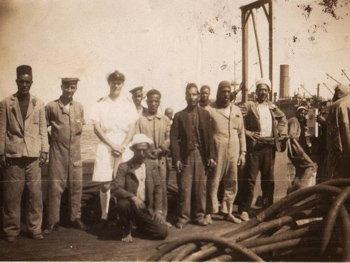 |
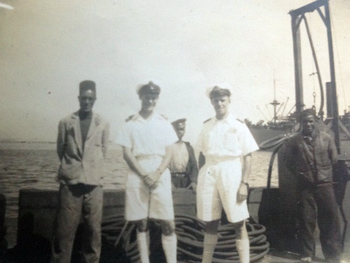 |
Local labour force. Charge hand, ratings, DG Officer. |
Local "Charge Hand" with two DG officers. |
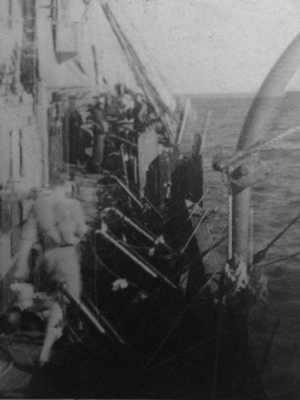 |
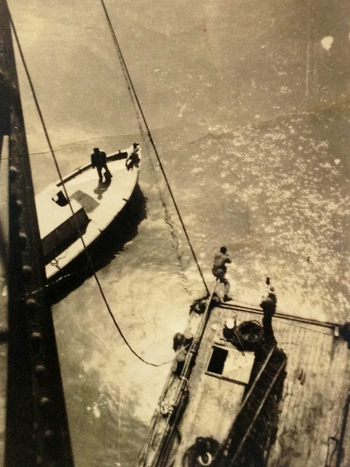 |
Small ship possibly rigged for laying degaussing range? |
Photo shows "pole" on barge photo (taken from crane jib) guy doing something on end of "pole". |
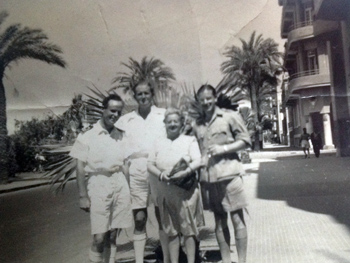 |
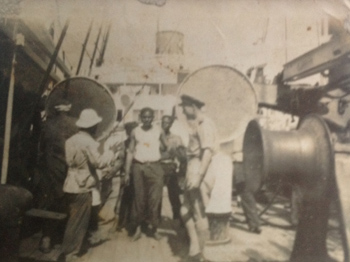 |
Lt. Cdr. S. Robinson on left with two officers and civilian (possibly admin) on leave; looks like Alexandria. |
Possibly degaussing Officer talking to translator in pith helmet on ship. Winter uniform. |
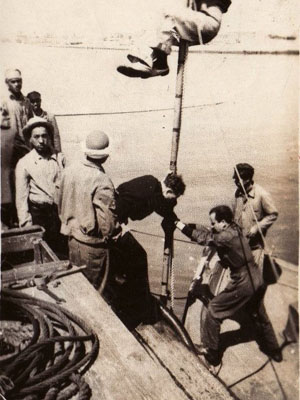 |
 |
| "Pole" being positioned? |
Lt. Cdr. S. Robinson examining/aligning pole end when installing measuring equipment for checking on degaussing. |
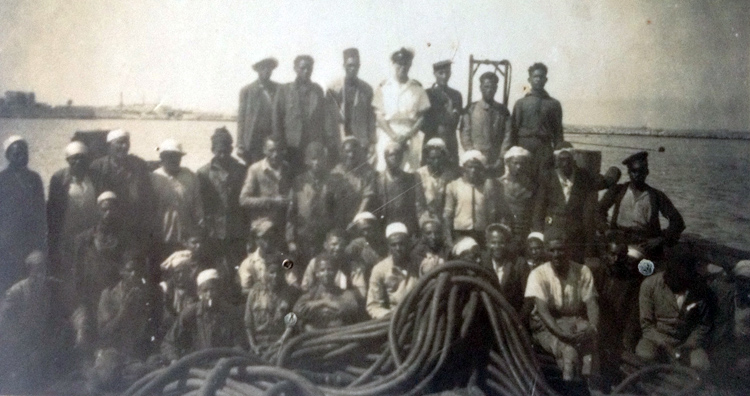 |
Local labour force Alexandra mentioned in reference (HMS Nile). |
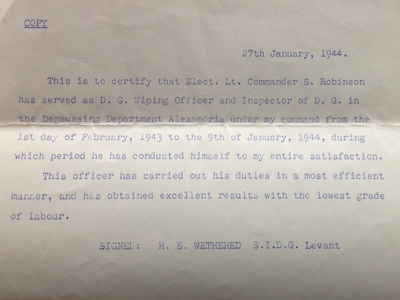 |
 |
If you have any further details of Alexandria antisubmarine harbour defences in general (Indicator Loops and Harbour Defence Asdic) that may help with this research project please email me at the email address above.
If you have any feedback on this webpage, including photos or details, please email me -
Dr Richard Walding - at waldingr49@yahoo.com.au